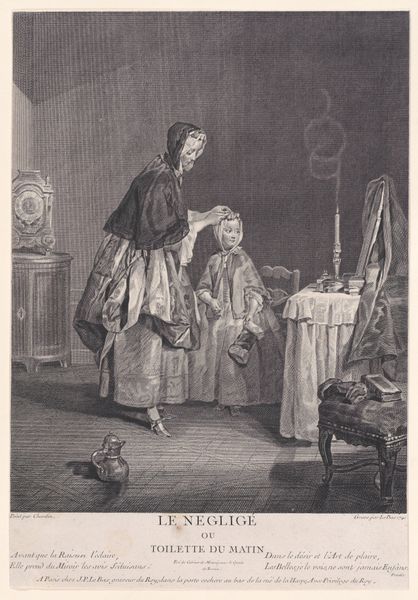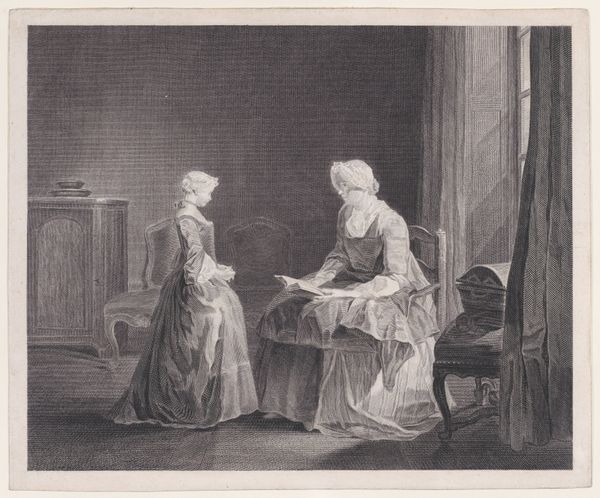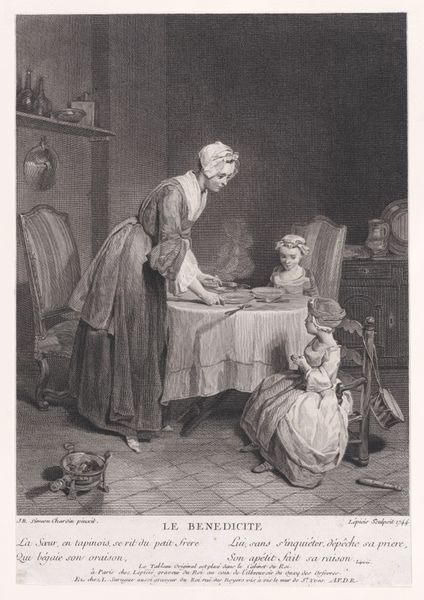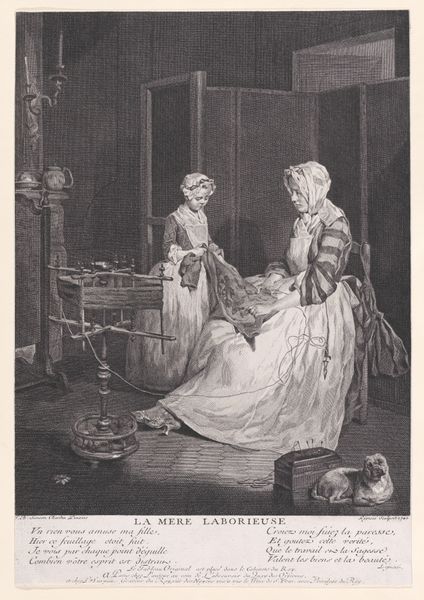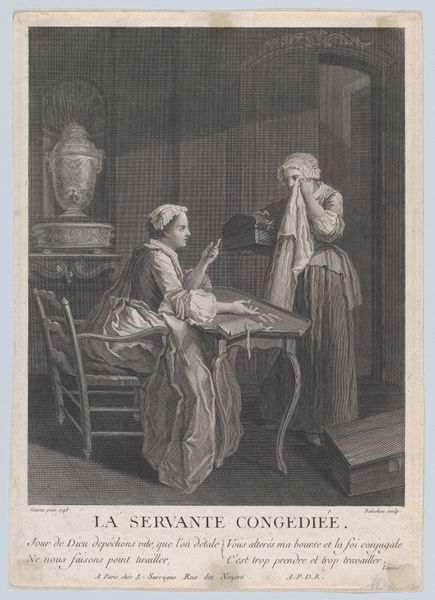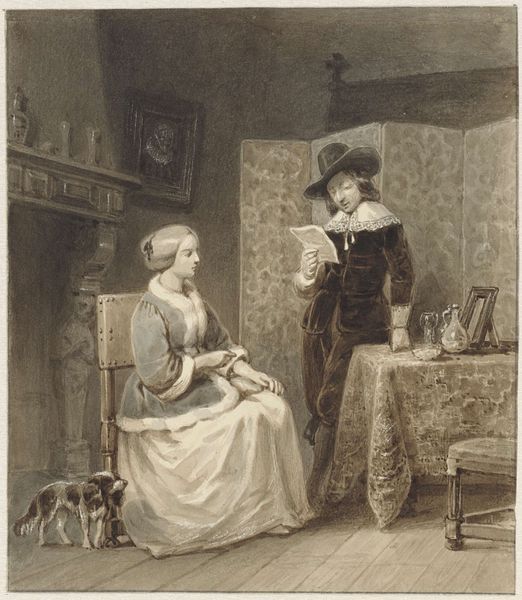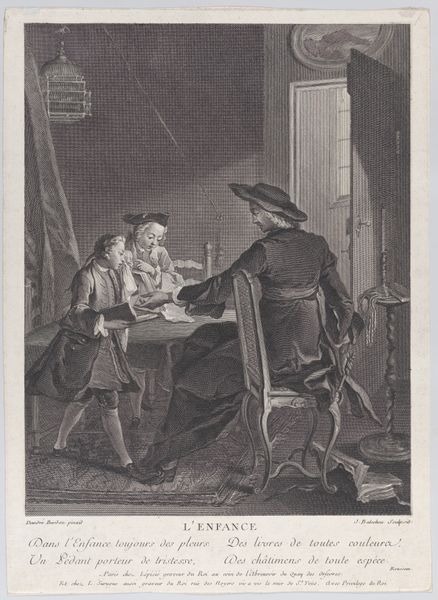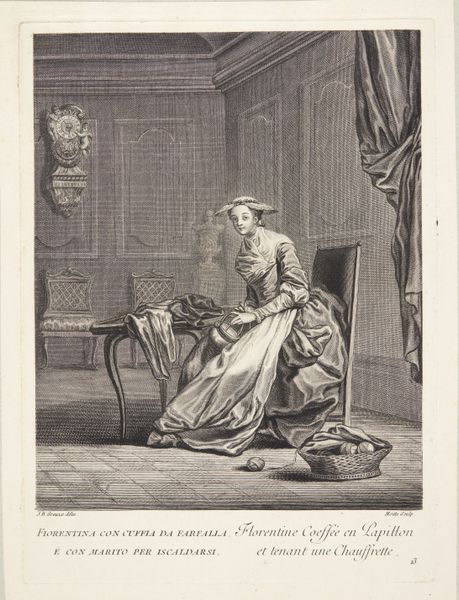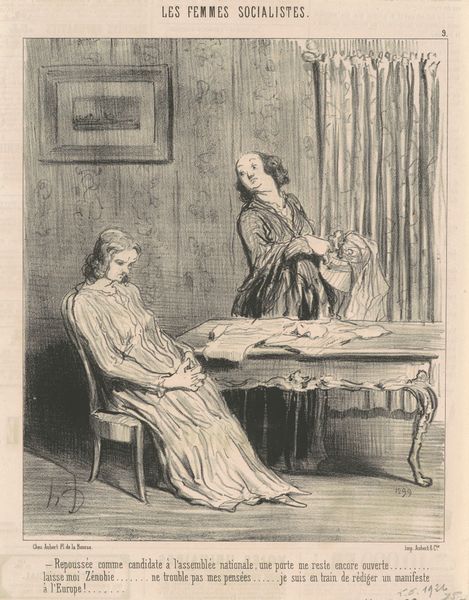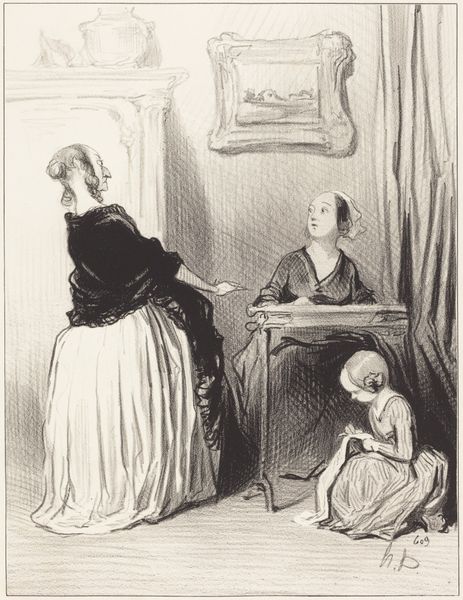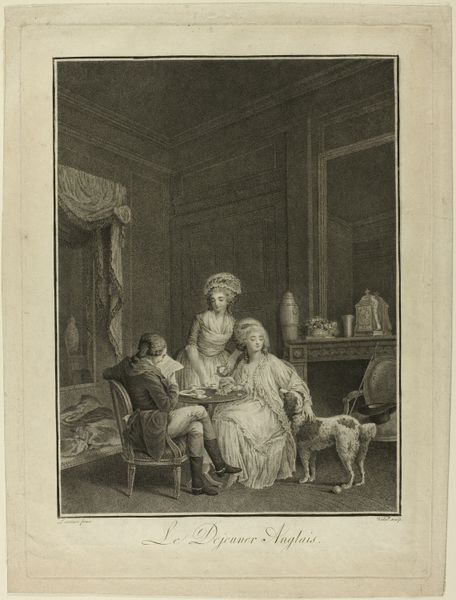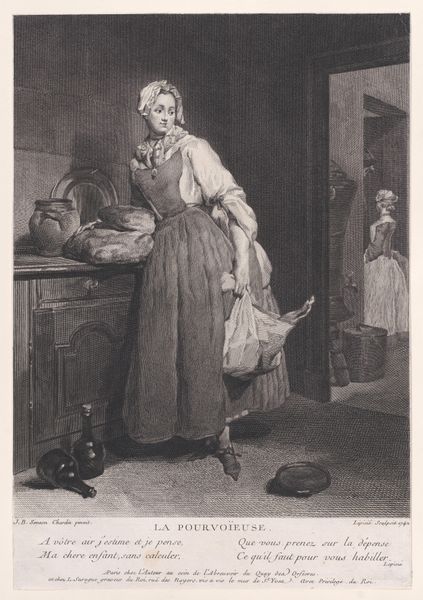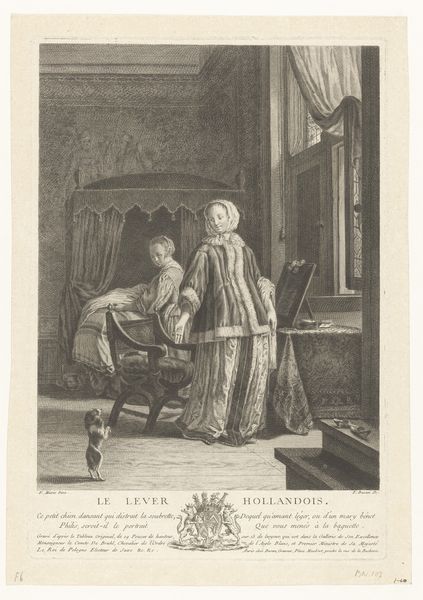
drawing, print, engraving
#
drawing
# print
#
old engraving style
#
boy
#
15_18th-century
#
genre-painting
#
engraving
Dimensions: Sheet: 14 3/8 × 10 1/16 in. (36.5 × 25.5 cm)
Copyright: Public Domain
Curator: Here we have Bernard Lepicié’s “The Governess,” an engraving from 1739. It's currently part of the collection at the Metropolitan Museum of Art. Editor: The eye is immediately drawn to the tonal contrasts – the almost stark white of the Governess's gown, set against the shadowed background and darker forms in the foreground. Curator: Absolutely, and consider the context. Genre scenes like this became popular as they allowed for a commentary on social norms, family structures, and the role of education, particularly for young boys of privilege in 18th-century France. Is this a story of the unequal relationships in society, particularly around class and service? Editor: Indeed. Semiotically, consider how the domestic setting acts as a stage. The toy lying abandoned on the floor beside the Shuttlecock, perhaps hinting at childhood freedoms curtailed or a mischievous energy temporarily suppressed. The diagonal lines also imply an uneasiness in what seems to be an otherwise pleasant exchange. Curator: And the child bearing gifts? What is the true nature of their interactions? Are we witnessing an act of manipulation, a power dynamic being established at an early age within the confines of the upper classes? This print is a visual microcosm of the complexities embedded within the period's societal fabric. Editor: But the governess is still in the focal point, even above the young boy holding a present! Her facial features, etched in more detail than other areas of the picture, suggests a stern gaze – perhaps a silent reproach or admonishment toward her young charge. The present cannot mask the underlying order the Governess projects over her charge, nor the space they are in. Curator: It’s this sort of rich visual language that opens the artwork to interpretations beyond a simple domestic scene, inviting reflections on how social roles were constructed, negotiated, and reinforced through everyday interactions. The historical context helps decode that story, or rather those potential stories that unfold within the scene. Editor: This engraving pushes viewers to closely examine the composition's delicate balance, the light and shadows that underscore character dynamics. Through these elements, we discern Lepicié's astute command of narrative form as he unfolds this small drama before us. Curator: Ultimately, "The Governess" makes us ponder the invisible forces at play within ostensibly civil encounters, providing insight into 18th century norms. Editor: And also reveals Lepicié’s masterful control of light, shadow, and compositional balance, crafting a deceptively complex tableau ripe for interpretation.
Comments
No comments
Be the first to comment and join the conversation on the ultimate creative platform.
